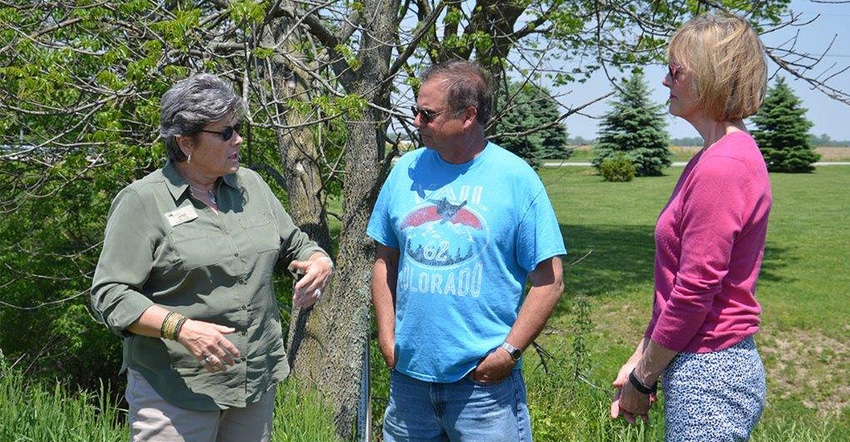August 7, 2017

Mother Nature sent a strong message to Indiana government officials and legislators this summer. The question is whether or not they were listening. An old margarine commercial spoofed the phrase: “It’s not nice to fool Mother Nature.” Proceed at your own risk if you don’t listen to her either.
One southern Indiana farmer says Mother Nature got his attention one night in June. Some 12 inches of rain fell in just a few hours. This farmer is a no-tiller who has used cover crops for years.
“We’ve still got good crops because we have hills and water got away quickly,” he explains. “But we also likely had more soil erosion this year than in the past 10 years put together. We try to do things right, but big rains like that are overwhelming.”
If he thinks he lost more soil than ever before, what about neighbors who still farm with conventional tillage? How much soil did they lose, and where did it go?
Sediment went into ditches and streams. Soil particles likely took nutrients along with them. When soil winds up in roadside ditches and lakes, it’s expensive to remove.
Farmers like Mike Starkey, Brownsburg, think there’s a better solution. There are 92 soil and water conservation districts already in place, already working with farmers. Why not give them more resources and turn them loose to help farmers who haven’t yet tried no-till and cover crops? Those practices can minimize losses when Mother Nature goes on a rampage.
Why not provide more funding for incentives so farmers who haven’t yet tried no-till and cover crops can see the difference firsthand? The Indiana Conservation Partnership, consisting of SWCDs and both federal and state agencies, has already proved that once farmers try these practices, many of them stay with the practices. Sometimes all it takes is a financial boost and encouragement to send them on their way.
Special guest
After spring rains hit Starkey’s area hard — even before midsummer rains pounded places like Huntingburg, Fowler and Franklin — he decided to show state leaders just how much conservation farming can help. He invited Indiana Secretary of Agriculture Suzanne Crouch to his farm.
“I wanted her to see firsthand the progress we can make once we commit to no-till and utilize cover crops,” Starkey says.
The lieutenant governor spent a couple of hours touring Starkey’s farm. I tagged along. Perhaps the most striking moment was when he showed Crouch a field in conventional tillage across the ditch from his field. Soil had washed so much that young soybean seedlings were struggling to poke through the crust.
Did she get the message? Did Crouch and others listen as Mother Nature wreaked havoc all season?
She appeared to get the message at Starkey’s farm. Time will tell if the message turns into action. The Indiana Association of Soil and Water Conservation Districts asked for additional funding for Clean Water Indiana in 2017 and was denied. They continue to ask for a new source of dedicated funding besides cigarette taxes. That request has fallen on deaf ears for three decades.
It’s time for those ears to finally hear the message, and turn that message into action. Soil is one of Indiana’s most valuable natural resources. It deserves protection, and it deserves respect.
You May Also Like




